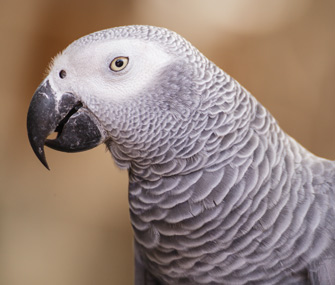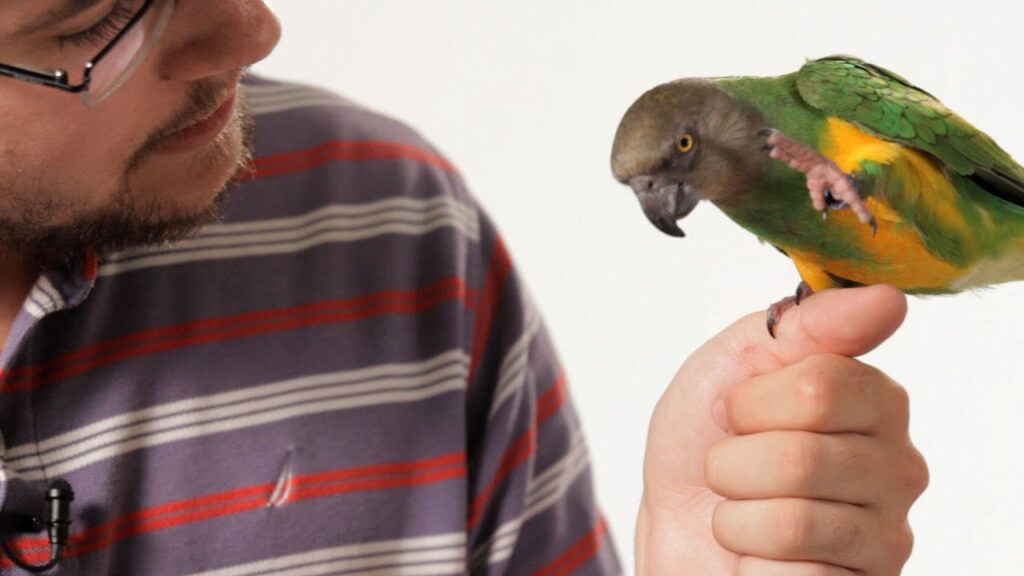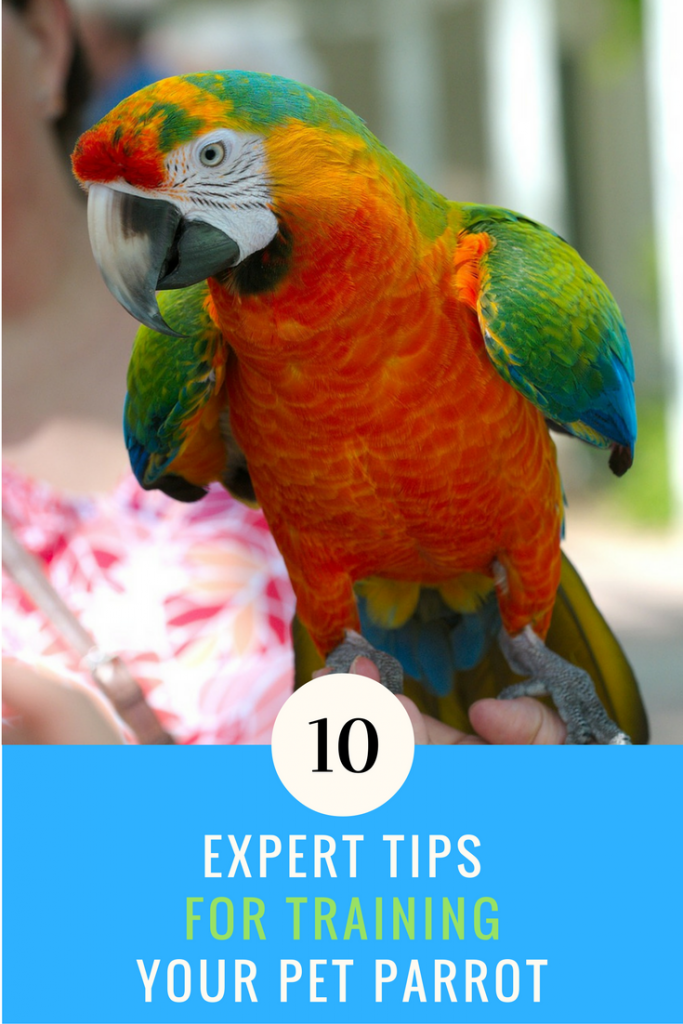Training your parrot to talk can be an incredibly rewarding experience! Not only does it strengthen the bond between you and your feathered friend, but it also enriches their mental stimulation. Many parrot owners cherish those delightful moments when their birds mimic words or phrases. But before diving into the how-to's, it's essential to understand your parrot's natural communication methods and what makes them tick. So, let's get started on this fascinating journey of bird talk!
Understanding Your Parrot's Communication

Parrots are indeed remarkable creatures, and their ability to communicate is just one of the many reasons we adore them. To train your parrot effectively, you first need to understand how they communicate in their natural habitat. Here’s a breakdown of their communication styles:
- Vocalizations: Parrots use a range of sounds to express their feelings. From soft chirps to loud squawks, each sound can indicate excitement, fear, or contentment.
- Body Language: Your parrot's posture, wing position, and head movements convey emotions. For example, puffed-up feathers might indicate excitement or aggression.
- Social Interactions: In the wild, parrots communicate through social behaviors. Mimicking your interaction style can enhance your training sessions.
It's also helpful to know which types of parrots are more prone to talking. African Grey Parrots and Budgerigars are renowned for their vocal abilities, while other species might prefer to express themselves through body language rather than spoken words.
Remember, each parrot has its personality! Some may take to talking readily, while others might just enjoy whistling or making sounds. The key is patience and consistency. Utilize positive reinforcement techniques by rewarding your parrot with treats or praise when they successfully mimic a word or phrase. By appreciating their unique communication style, you’ll not only improve your training efforts but also deepen your connection with your beloved pet.
Also Read This: Is YouTube Free on Firestick Exploring Streaming Options and Costs
Choosing the Right Words and Phrases

When it comes to training your parrot to talk, the words and phrases you choose play a crucial role. Not all words will resonate with your feathered friend, so it's essential to select those that are not only easy to pronounce but also meaningful to your bird. Here are some tips to help you choose wisely:
- Keep It Simple: Opt for short, one or two-syllable words. Words like "hello," "bye-bye," or "no" are excellent starting points.
- Use Familiar Words: Incorporate words that your parrot hears often in daily life. This could be names of family members, favorite snacks, or common actions like "come here."
- Be Consistent: Consistency is key! Always use the same phrase for the same action. For example, if you want your parrot to say "good morning," use that phrase every day.
- Make It Fun: Choose words that inspire excitement. Phrases like "time for a treat!" or "let's play!" can make training sessions more engaging.
- Engage in Repetition: Repetition is essential for learning. Reiterate the chosen words multiple times during your interactions, attaching them to specific actions.
Remember, patience is vital. Some parrots may pick up words quickly, while others take their sweet time. Enjoy the process and celebrate small victories!
Also Read This: How to Cast Rumble to Your TV: A Comprehensive Step-by-Step Guide
Creating an Effective Training Environment

The environment in which you train your parrot can significantly impact learning outcomes. An effective training space should be conducive to focus and free from distractions. Here’s how you can create the perfect setting:
- Quiet Space: Choose a quiet area in your home, away from loud noises and commotion. This allows your parrot to concentrate fully on the training sessions.
- Comfortable Perch: Provide a comfortable perch or training stand at eye level. Your parrot will feel more relaxed and open to learning in a familiar and secure space.
- Limit Distractions: Keep toys, other pets, and distractions to a minimum during training. You want your parrot’s full attention on you and the task at hand.
- Positive Stimulation: Incorporate stimulating visuals, like colorful toys or pictures on the wall. This can make the environment more engaging without distracting them from training.
- Designate a Training Time: Train your parrot at the same time each day. This routine helps reinforce the idea that it’s time to learn, making your sessions more effective.
Creating the right environment can make a world of difference in your parrot's training journey. So, set the stage for success and watch your feathered friend flourish!
Also Read This: Can You Get PAC 12 on YouTube TV
Techniques for Teaching Your Parrot to Talk
Teaching your parrot to talk can be an incredibly rewarding journey. Parrots, with their remarkable intelligence and vocal abilities, can learn a variety of words and phrases when trained well. Below are some effective techniques that can help you get started:
- Repetition: Just like in human learning, repetition is key. Consistently repeat the word or phrase you want your parrot to learn. Doing this multiple times a day will help reinforce the sound in their memory.
- Positive Reinforcement: Whenever your parrot attempts to mimic a sound or word, reward them with a treat or praise. This encourages them to keep trying. For example, say "hello" and when they respond, give them a small piece of fruit.
- Choose Appropriate Words: Start with simple, one-syllable words or short phrases. Words like "hello," "bye," or their name are great places to start. Once they have mastered a few, you can gradually introduce longer phrases.
- Consistent Environment: Creating a routine around training sessions can help. Try to teach your parrot when they are naturally active. Early mornings or late afternoons are usually the most engaging for parrots.
- Use a Clear Voice: Speak clearly and distinctly. Parrots can pick up on nuances, so ensure your tone is consistent whenever you’re teaching them.
- Avoid Distractions: Make sure to train in a calm environment free from distractions like loud noises or other pets. This helps your parrot focus solely on you and the words you’re teaching.
Also Read This: How to Add YouTube Music to Alexa For a Seamless Listening Experience
Using Video Tutorials to Enhance Training
In today’s digital age, utilizing video tutorials can significantly enhance the process of teaching your parrot to talk. Here’s how you can make the most out of these visual resources:
- Visual Learning: Parrots are naturally visual creatures. Watching other parrots mimic words can inspire your bird and show them what's possible. Video tutorials often present techniques in a fun and engaging way.
- Step-by-Step Guidance: Many video tutorials break down the training process into easy-to-follow steps. This structured approach can help new parrot owners understand what to do and when.
- Multiple Examples: Videos typically feature various parrots, showcasing diverse talking abilities. Observing others can provide you with ideas on what works best for your feathered friend.
- Community Interaction: Some platforms allow you to engage with other parrot owners. This community aspect can offer tips, personal experiences, and encouragement that enhances your learning experience.
- Access to Experts: Many reputable trainers share their expertise through online videos, allowing you to learn from the best in the field. Utilize these resources to incorporate tried-and-true techniques into your training sessions.
- Free Resources: There’s a wealth of free content available online, meaning you can start training without a financial investment. However, always check the credibility of the source before implementing any techniques.
Also Read This: Mastering the Art of Paper Cranes with This Step-by-Step Origami Guide
Common Challenges and Solutions
Training your parrot to talk can be a rewarding experience, but it doesn’t come without its challenges. Every parrot has a unique personality and learning style, which means that what works for one bird might not work for another. Here, we’ll explore some frequent difficulties you might encounter and offer practical solutions to help you along the way.
- Challenge: Lack of Interest
Sometimes, your parrot just isn’t in the mood to chat. This can be frustrating! Birds are creatures of habit, and if they don’t feel engaged, they won’t want to participate in training sessions.
Solution: Mix it up! Change the training environment or the time of day when you practice. Introduce new toys or treats to make the experience exciting.
- Challenge: Limited Attention Span
Parrots can be easily distracted, which can hinder your training efforts. If your sessions are too long, your parrot might lose focus.
Solution: Keep sessions short and sweet! Aim for 5-10 minute bursts of training to hold their attention.
- Challenge: Mimicking vs. Understanding
Sometimes, your parrot may mimic words without truly understanding their meaning. This can lead to frustration when you want them to respond to cues.
Solution: Use context. Always pair words with actions or visual cues. For instance, say "water" when you offer a drink to reinforce the meaning.
Also Read This: FuboTV vs YouTube TV Which Streaming Service is Better for You
Maintaining Your Parrot's Interest and Motivation
Keeping your parrot engaged during the training process is crucial for success. A bored parrot isn’t going to be a talkative parrot! Here are some effective strategies to maintain interest and motivation:
- Variety is Key
Mix up the words and phrases you teach. Instead of sticking to just ‘hello’ or ‘bye-bye’, introduce fun phrases that might pique their interest, such as “What are you doing?” or “Let’s play!”
- Positive Reinforcement
Always reward your parrot with treats, praise, or playtime when they make an effort to speak. A simple “Good job!” goes a long way in encouraging them.
- Utilize Technology
Consider using video tutorials as training aids. Watching other birds talk might inspire your parrot. Choose engaging content and combine it with personal interaction.
- Regular Interaction
Spend time just hanging out with your parrot. Engage in activities like dancing, playing games, or even just chatting. This social interaction helps build a bond and encourages them to express themselves.
Comprehensive Tips for Training Parrots to Talk with Video Tutorials
Training your parrot to talk is not only an enriching experience for you but also a great mental exercise for the bird. To begin this delightful journey, consider following these comprehensive tips:
- Choose the Right Species: Some parrot species are more inclined to mimic human speech. Popular talkative breeds include:
- African Grey Parrots
- Amazon Parrots
- Budgerigars (Budgies)
- Eclectus Parrots
- Create a Positive Environment: Ensure that your parrot feels safe and stress-free by:
- Providing a comfortable cage
- Avoiding loud noises and distractions
- Spending quality time with your bird
- Use Repetition: Repetition is key when training your parrot to talk. Focus on a few simple words or phrases, such as:
- "Hello"
- "Goodbye"
- Your parrot's name
- Incorporate Video Tutorials: Utilize various online video tutorials that showcase training techniques. Some great platforms include:
Platform Type of Content YouTube Free tutorials and training guides Udemy Structured courses for bird training - Be Patient and Consistent: Training takes time, and patience is vital. Set aside a few minutes each day for practice, and avoid discouragement if progress seems slow.
By using these tips and integrating video resources into your training routine, you can foster a meaningful bond with your parrot while enhancing its speaking abilities. Remember, positive reinforcement and persistence are your best tools in this exciting endeavor.
 admin
admin








